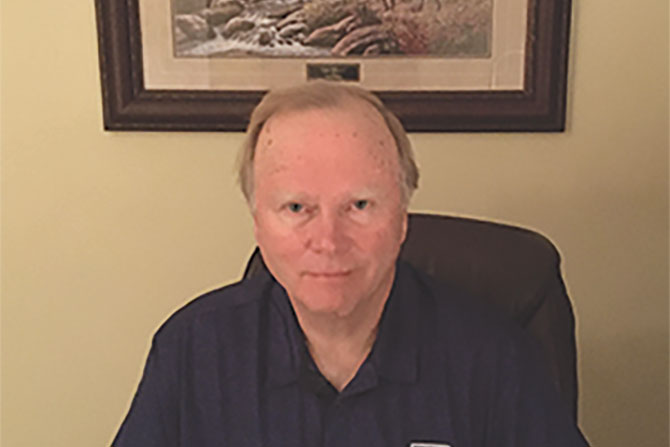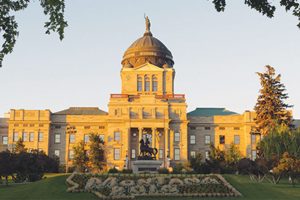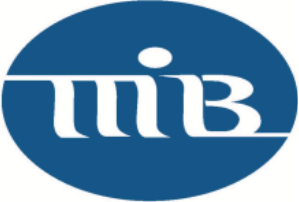Interview by MIB Executive Director Jim Brown
You have been a Montana community banker for many years. Tell us about your industry background, how you got into banking, and what Montana’s community bankers may not know about you.
Thank you, Jim, for this opportunity to share a little about myself, so the Montana member banks know something about who is representing them on the FHLB.
I started my banking career in Illinois with the OCC in 1978, but I quickly realized I wasn’t cut out to be a regulator for the next 40 years! I needed a profit and loss scorecard to know if I was winning or losing. I didn’t want to just be looking over some banker’s shoulder all day trying to catch a mistake, although I did appreciate the training it offered.
I was fortunate to get my first CEO job for a community bank in 1991 in a university town in southern Illinois. It was fulfilling in every way. We went from a bottom quartile bank to a top quartile high-performance bank very quickly. But in addition to the financial performance, I got hooked on the virtuous impact a community bank can have when everyone from the board on down knows we exist to help the community flourish.
That chapter of my career ended with a bang when our success captured the eyes of acquisition-minded banks in 1999. It was difficult to sell a bank that was doing so well by almost every measure, but we received some offers in the 4x book range that were difficult to turn down from a fiduciary point of view. Our investment banker’s fairness opinion stated that the bank sold for the highest multiples in the history of the state of Illinois.
I stayed with the acquiring bank for a few years, but I deeply missed being in a community bank and having the chance to lead as a CEO. When I saw an opportunity advertised in the Wall Street Journal for a CEO position with First Montana Bank, I was smitten with the job and the prospect of living in Montana. After being offered the job, my wife and I, along with four shell-shocked kids, moved to Montana in 2005.
There were many wonderful similarities between running a bank in Illinois compared to Montana. I found the same independent spirit, dedication to serving a local community and great talent on both the board and management team. However, it hadn’t dawned on me how challenging it would be to run a bank of about 250 million spread over 450 miles in seven different communities. That lack of population gave me a great respect for Montana’s bankers, who overcome the inefficiencies that come with a lack of population. But, believe me, it was much more delightful traveling those miles in Montana through our mountain scenery than the shorter branch trips I took through the cornfields of Illinois!
In 2018, after 40 years in banking, I felt great about the deep bench strength at First Montana and felt the time was right to step out of the CEO position. However, I’ve stayed active as a consultant and outside board member at First Montana Bank. I also enjoy writing these days on various topics, but I have a particular interest in exploring how to connect our personal finances to a purposeful life.
You are presently the Montana Member Director for the FHLB Des Moines. When did you take on that role and how long is your term?
The timing of the FHLB board seat opportunity was perfect for me. I left my CEO position in February of 2018 and was appointed to serve out the unexpired term of Mick Blodnick in March of 2018. I was then elected to a new four-year term last year that will run through the end of 2023, when I hope to earn another four years.
What are the top goals for the FHLB Des Moines? What is the home loan bank working on or toward?
FHLB’s top goal is to be a reliable source of liquidity for community financial institutions. Since the Great Depression, when the FHLB system was created, our cooperative has always been there when liquidity markets tightened. We shined particularly well in the 2008 financial crisis when many markets began to freeze up. Because community banks don’t have the sources of liquidity large megabanks have, I find myself passionate about this goal because it is a key to the business model of those community banks that desire to remain independent.
Affordable housing support is the other cornerstone of what FHLBs offer. Montana banks and grants widely use the HomeStart down payment program for homeowners to large-scale affordable housing projects. By law, we must give 10% of our profits to encourage affordable housing.
In addition to these broad missional goals, I want to see our cooperative make it easier to pledge collateral for loan advances, including using electronic signature CRE loans rather than continuing to require wet signatures. I also love the dedication of our field representatives like Eric Jensen, who serves Montana bankers. I want to do all I can to encourage the high quality of service that comes with your membership.
What do you enjoy doing in your free time — when you have free time?
My kids were quite worried when we moved them to Montana, but now they look back at their time in the Midwest and wonder what they did there. We love all that Montana has to offer, but my favorite pastime is just hiking through our incredible mountains and enjoying all things outdoors.
If you had not gone into banking, what would you have done professionally?
That’s a tough question because I feel like I had the career I was meant to live. I found purpose, deep friendships and lots of laughter in my banking career, but if I couldn’t be a banker, I think I’d find a way to make a career out of writing and communicating with others.
What is the most rewarding aspect of working with Montana’s community banks for you?
I have been so moved the last few months, listening to our bankers talk about how stressful but rewarding the whole PPP loan rollout was. I know many bankers who worked into the wee hours of the night seven days a week to get it done because our small businesses and communities were in desperate straits. I couldn’t be prouder of the effort every Montana banker I know calls the “most stressful but rewarding experience” of their careers. Where can you find a job working with better people? I love it.
Montana has seen an increasing number of banks consolidate. What is your review of the future of Montana’s community banks?
There are real economies of scale in banking, so the trend of consolidation will probably continue. However, I also think the local touch, especially with small businesses, is valued and can create a way for community banks to prosper as independent banks. The whole PPP event was a very visible show of how we can punch above our weight in our service to small businesses. I think we showed up the big banks, and many small businesses are still open today because of us. That kind of extraordinary effort by our bankers creates a lifetime of loyalty among our customers. As the FHLB provides a liquidity backstop and local lenders provide the high relationship touch, I would like to think that community banks will continue to earn their cost of capital to justify independence if they chose that course.
Banking marijuana is a very hot topic for Montana banks right now, given the recent vote to legalize recreational use of marijuana. Is there a safe path forward for Montana’s community banks to bank marijuana proceeds or money?
I don’t have much insight into this topic, but it seems to me we need federal legislation to give banks a safe harbor.
What is the single most important topic you have worked on as FHLB Montana Member Director?
As with any organization, leadership is the key to long term success. I am very pleased that when Mike Wilson retired in early 2020, we could attract Kris Williams from the Pittsburg FHLB to be our CEO. I have been very impressed with her leadership skills and the new team she has put together in a few short months in the middle of a pandemic. I believe the FHLB will become more responsive to member needs as we move forward under her leadership, and I’m proud that I was a director with a voice in that decision.
Interview by MIB Executive Director Jim Brown
This story appears in Issue 4 2020 of the Community Banker Magazine.









